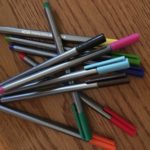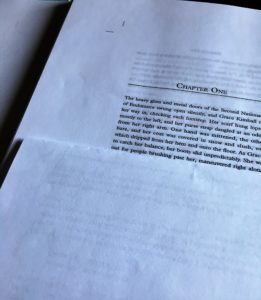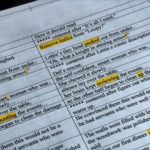I am generally professional about keeping up with blog posts. However, this summer I missed July since I had a mishap that  resulted in a broken vertebrae. No blog posts showed up on their own. No writing was done by my computer. That month was just a blur. August has been a marathon of proofreading, both by me and also two of my friends who ferret out typos with enthusiasm. I have great proofreaders!
resulted in a broken vertebrae. No blog posts showed up on their own. No writing was done by my computer. That month was just a blur. August has been a marathon of proofreading, both by me and also two of my friends who ferret out typos with enthusiasm. I have great proofreaders!
Now, Five Star Publishing has the final copy of Marry in Haste, the second of the Endurance mysteries. They also have some corrections to work on before printing. This mystery can be pre-ordered here, right now, if you want a hardcover, or you can wait until it is actually out to order it online in hardcover or e-book on its launch date, November 16, 2016.
If you live locally, and want to buy a hardcover copy, you can buy it starting December 7. [For some reason I don’t have trouble remembering that date.] I’ll have numerous book signings, and I’ll have books available in various businesses and shops. Don’t worry; I’ll keep you informed.
I am finally in the home stretch after waiting two years.
 Because I am now simply awaiting the book launch, this seems like a great day to write about proofreading. It’s the last thing I had to do, and it’s not the same as editing. Proofreading involves looking for those niggling comma errors, an occasional word choice change, a phrase that needs some fixing, and, of course, those ugly typos.
Because I am now simply awaiting the book launch, this seems like a great day to write about proofreading. It’s the last thing I had to do, and it’s not the same as editing. Proofreading involves looking for those niggling comma errors, an occasional word choice change, a phrase that needs some fixing, and, of course, those ugly typos.
Before proofreading, apply two principles. First, make sure you have put some time and distance between your brain and your manuscript. You would be surprised how easy it is to find errors when you haven’t read your words for a while. Second, make sure you have finished editing the whole thing before you start proofreading. This means look for mistakes you know you make, look for words you often repeat by using a word search, and check to make sure your sentences have varied beginnings and lengths. These are strictly editing chores that need to be done before the final proofing.
Now. Time to Proofread.
Read your entire novel out loud. Yes, out loud. You will hear errors when you say it that you don’t see when you read it silently. This is long and rather tedious, but divide the book up into parts so you don’t run out of steam. Take a break in between reading sections. After reading out loud, it’s time to proofread again quietly.
Computer or hard copy? This is a good question and authors differ on its answer. I prefer to edit on my computer screen and proofread on paper. Maybe it is a throwback to my teaching days when I read and marked soooo many essays and term papers. To me, when I read a paper copy rather than words on a computer screen, the paper manuscript looks more like it will actually look on its birthday. I use colored pens to mark the errors.
 One line at a time. I used to tell my students to proofread by starting with the very last sentence. Read it all by itself. Then read the sentence just ahead of the last sentence. When you take the context and comprehension out, you see each sentence alone and can find errors easily. Reading from the beginning to the end doesn’t work well because the sentences smoothly fit together with a relationship to each other. Often your brain fills in missing words. Make sense? But, I think it isn’t very time-effective to do this with an entire novel. So I start at the beginning, but I slide a piece of paper under the first line and read it without seeing what comes after it. Then I slide it down as I read the next line, etc. In a way, it’s much like reading an e-book where you notice the individual lines, and I find it doesn’t read the same as a hardcover book when you see the entire page.
One line at a time. I used to tell my students to proofread by starting with the very last sentence. Read it all by itself. Then read the sentence just ahead of the last sentence. When you take the context and comprehension out, you see each sentence alone and can find errors easily. Reading from the beginning to the end doesn’t work well because the sentences smoothly fit together with a relationship to each other. Often your brain fills in missing words. Make sense? But, I think it isn’t very time-effective to do this with an entire novel. So I start at the beginning, but I slide a piece of paper under the first line and read it without seeing what comes after it. Then I slide it down as I read the next line, etc. In a way, it’s much like reading an e-book where you notice the individual lines, and I find it doesn’t read the same as a hardcover book when you see the entire page.
Spell-Check? Yes, by all means, use it as a backup once you have finished proofreading with your own voice, eyes, and colored pens. It may catch something you didn’t.

The publisher receives the final corrections as a list.
Rest, too. Trying to proofread an entire novel in one or two sittings often results in errors you missed because you were too tired. Take breaks in between sections so you’ll be refreshed when you go back to this tedious part of writing.
That said, I hope my next book will have zero errors. I’m not sure what the probability is for that, but I’ve used three sets of eyes, and that worked quite well on the earlier novel, Three May Keep a Secret. It’s wonderful to have good friends who are also great proofreaders.

Susan, first I can’t wait to read Marry In Haste. Secondly, thanks so much for this post. It is a toolbox of useful information that all writers can employ as they carry out their craft. As always, a great blog post–and especially useful.
Thanks, Jim. I know you’ve been doing a lot of this lately!
Susan, I empathize with recuperating away from your computer; getting over extensive back surgery myself. If you’d like a guest spot in November on my crime review blog, email me to set up.
Congrats on Bk 2!
Marni Graff
Thanks for checking out my website, Marni. I will email you. Also, I hope your back is getting better!!